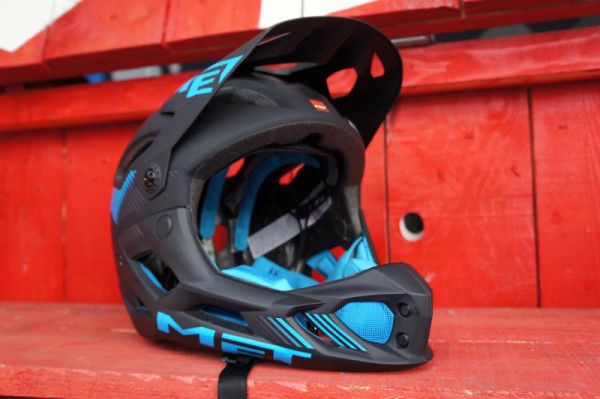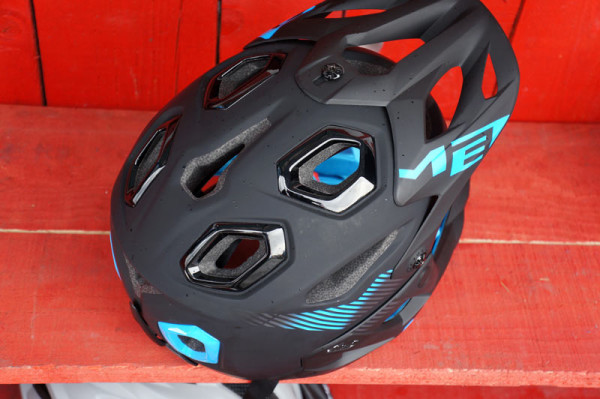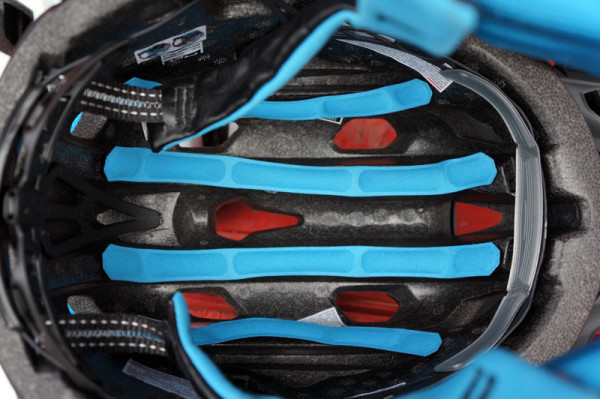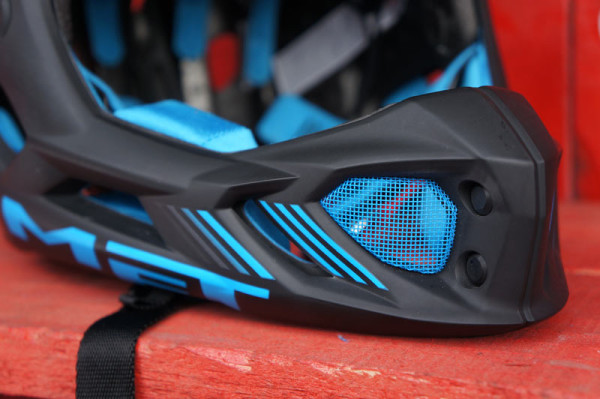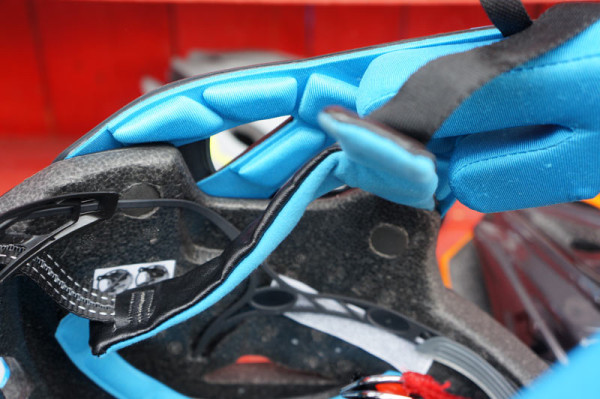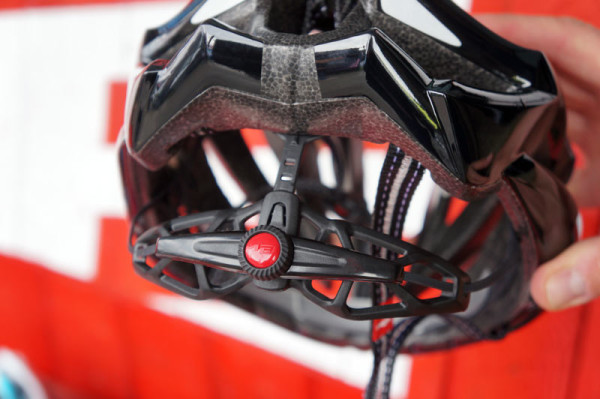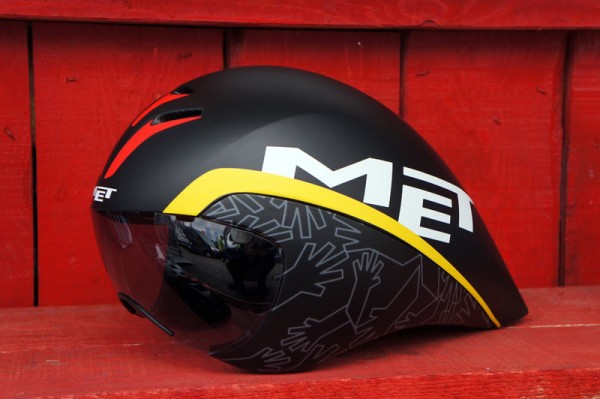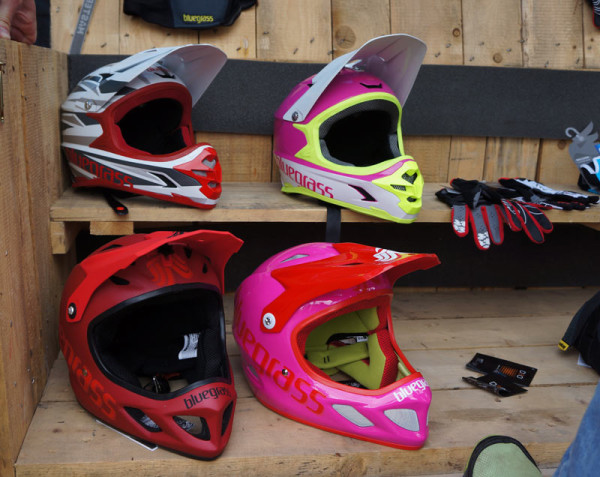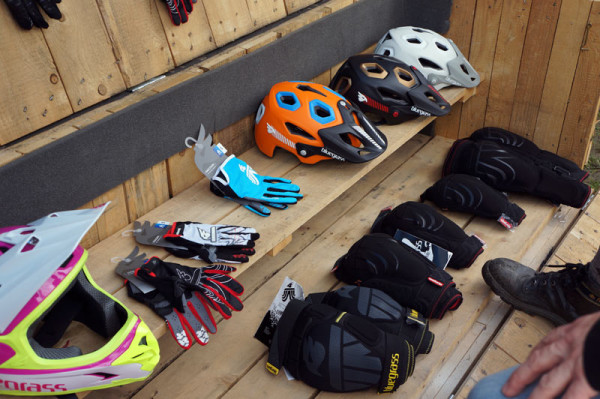Not only is MET coming to the U.S. by way of Todson in 2015, but they’ll be bringing an amazing new helmet with them.
The 700g MET Parachute HES is the lightest full face helmet we’ve ever seen, and it meets ASTM F1952-2032 standards for safety. That standard is for downhill helmets that don’t have to have a chin bar, but it includes performance criteria for testing one if it does. The standard also carries higher impact force requirements than the other two primary bicycle helmet standards since, presumably, DH carries the risk of higher impact crashes.
The new Parachute HES has a non-removable chin bar, which differentiates it from past models. Outward appearances suggest downhill, but the weight and ventilation prove this thing’s all about enduro…
Compared to full featured DH lids, the Parachute has way, way more venting to help keep you cool on the climbs, too. Another benefit? All those vents help outside sounds reach your ears for perfect situational awareness. Archer approved.
Other nice features include goggle strap clips and a removable video camera mount.
Deep interior channels help cool air flow over your head. They’re formed into the EPS, which is in-molded with the monocoque shell. The EPS has multiple densities to better distribute impact forces.
The chin bar is attached at several points, it’s not a contiguous form. But inside the EPS upper are webbed plastic inserts that provide a solid anchor spread throughout the foam. They’re not likely to pull out, and there’s no way to remove the chin bar.
Two different pad thicknesses are available for the chin area. The forehead’s padding is their O2 Gel, which helps keep sweat from dripping down into your eyes. The visor has alloy pivots and its position can be finely adjusted. Another unique feature of the Parachute is the locking straps. Where most full face helmets use a single chinstrap, this one gets something more similar to a three point strap on regular helmets. The straps attach to the helmet at two points on each side, then a lateral divider slides into place under the ears and locks into place. Then, a single strap goes under your chin and uses a double-D buckle to pull tight. MET’s materials say this keeps the helmet securely in the proper position to maximize safety.
In the back, it gets their latest SAFE-T retention mech, which is both light weight and provides a broad contact patch to avoid pressure points:
The new SAFE-T retention is shown here on a road helmet.
The Parachute HES will retail for €200 / £169 / $289 / CAD 249. We’re waiting to hear back on U.S. pricing. The 700g weight is for a size Medium, and the Large comes in at a claimed 740g. Sizes are 54/58 cm (M) and 59/62 cm (L).
On the complete opposite end of the spectrum is MET’s new Drone TT/Triathlon helmet. It’s the 100th helmet designed by the company since it was founded in 1987. The helmet wraps the in-molded shell around the bottom of the helmet, which not only improves overall strength, but keeps the outside surfaces ultra smooth. Inside the EPS foam is a skeleton to help keep it all together and spread impact forces across a wider area.
It’s called the Drone Wide Body because it gets a wider overall profile, which MET says improves airflow distribution and aerodynamics. They’ve tested it in the wind tunnel, but their materials don’t have specifics other than to say it’s rather aero. Other aero features include thinner, lighter straps with flattened adjustment slides, and those straps are mounted to the inside edge of the helmet to keep them as close to the head as possible.
They do, however, point out that the three small vents and minimized contact area with the head help keep air flowing through it to keep you cool. There are also small vents at the top of the included polycarbonate visor, plus a massive exit port at the rear.
Retail is €299 / £249 / $399 / CAD 349. Claimed weights are 350g (M) and 400g (L).
Bluegrass is a two-year-old sister brand to MET and has some pretty interesting philosophies around it’s protection. Meant as a more aggressive brand, it builds in European motorcycle safety standards into its mountain bike gear, from body armor to helmets. Some models use D3O inserts to absorb impact, and the full face helmets are mostly between 1,000 and 1,100 grams. Like the MET versions, they share a lot of the same venting and open hearing designs.
Their Golden Eyes all-mountain helmet has also been getting a lot of attention from European press. No word on whether these are coming to the U.S. anytime soon, but they’re worth a look at over at BlueGrassEagle.com.
